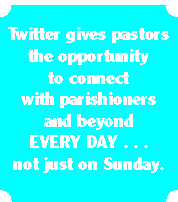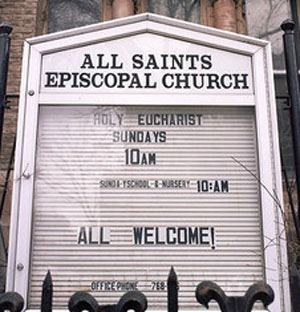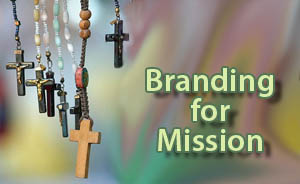The Usual Approach and Why It Doesn’t Work
Guaranteed, the first response when a congregation pushes for an online preaching presence will be the offer to post transcripts of Sunday sermons. There. Done. Let’s move on.
Also guaranteed, no one will read them. The style does not fit the habits of online readers.
People don’t read online sermons. Post them for reference if you like, but they won’t find readers, new or old.
Effective online preaching is not what the Church wants to hear about. They want people in the pews, listening to 20-minute sermons and sticking around at least until the offering plate is passed. Pastors have worked hard at their 20-minute preaching skills. They’ve studied with the best 20-minute preachers.
The effectiveness of the sermon as compared to any other form of communication is rarely discussed between pastors and congregants. The formula is so old that questioning it seems to fly in the face of the oft-heard demand for change. “We didn’t mean this kind of change!” So the 20-minute sermon is what people in the pew expect. It is what pastors are trained to do. What’s the problem?
There are very few people in the pew. The 20-minute sermon is reaching practically no ears.
It is not the first time preaching styles have changed. Decades ago people thought nothing of settling in on a wooden plank pew to listen to a preacher for two or three hours. No more. A century ago a weekend revival was a big attraction. In Jesus’ day people would sit on a hillside all day to listen to a good speaker. And now our cultural expectations are shifting again.
As a life-long church goer, I enjoy a good sermon. I am also very aware that even great sermons are ephemeral. They are forgotten in less time than it takes to deliver them.
Recently, our Ambassadors listened to a sermon in which the preacher made five points. He illustrated the points well. He even used visual props and interspersed some music. It grabbed my interest. I thought as he was speaking, I really ought to write some of this down. When we left church, one of our Ambassadors who is also a retired pastor commented that he thought the sermon was really good. A few hours later I sat down to write a few words about the sermon. I could remember three of the five points. I contacted the pastor who was with us and who had gushed about the sermon. “What were the five points the pastor made? I asked. “I can remember only three of them.” The pastor paused for a moment and finally said, “That’s three more than I can remember.”
And that’s the problem preachers have in relating to modern listeners. They are not connecting with the modern attention span and sensibility. People are wired differently today. That difference is going to grow as today’s younger generations reach church leadership age—if they stay involved long enough to serve.
People today process much more information from many more sources than did our ancestors. Our most valued skill sets are dominated by multi-tasking. We want the same information. We need for it to bedelivered in ways we can process while we do a dozen other things.
Online preaching is suited for this. Twitter is ideal. There is no reason to bemoan the decline of the Church in this regard. It is a new opportunity for the Church.
Preachers and congregations, for the first time in history, have the opportunity to communicate with members and beyond every day! You are no longer limited to the confines of the 20-minute sermon. (If you click on the blue sentence, it will go out as a tweet. More on that nice capability later.)
Two Effective Online Preachers
There are several online pastors I follow. One is Jon Swanson who writes a blog, 300 words a day with a second daily email blast to subscribers called 7×7 or 7 minutes with God. 7×7 is nothing more than a link to a short scripture passage and usually just one sentence to help you think about the passage. For those wanting to read more he offers a 14-minute option. In recent months, by virtue of his email links, I have read several epistles in their entirety, 1 and 2 Chronicles, Esther, Ezra and most notably the book of Nehemiah.
Pastor Swanson has effectively communicated his passion for Nehemiah in ongoing posts, supporting the daily reading. This chronicle of an unlikely building contractor is pretty easy to skip over for the average Bible reader. Nehemiah is sad to hear the temple is destroyed and sets out to rebuild it. He recruits help. He records long lists ancient names of contributors, complete with geneological references that contribute even more unusual names that haven’t been pronounced in centuries. He fights off the high and mighty who want to see him fail. As he nears completion in 52 days he recruits the people to staff the temple and returns a whole people to God. It is anything but boring when read with the gentle prods of Pastor Swanson.
In fact, it is amazingly similar to the experience of 2×2 — rebuilding a church after (or during) an attempt to totally destroy us. Nehemiah faced the the same behind-the-scenes conniving and intrigue, the same obstacles of human nature. Nehemiah, under the gentle guidance of Pastor Swanson, empowers us.
Recently, through our Twitter account, I’ve discovered Bishop T.D. Jakes. I’ve seen this guy on TV as a frequent talk show guest, but I never paid much attention to him. I won’t point you to his website. It’s easy enough to find and heavily monetized. That’s not what I admire about his ministry. His Twitter ministry is very effective. He tweets just one inspiring thought a day — just what a lot of us hunkered in the Christian trenches need. A sample:
God sees your tears! God sees your circumstances! God sees your situation! God sees your faith and perseverance! WAIT ON HIM!
 These Christian leaders are mastering the 21st century art of preaching.
These Christian leaders are mastering the 21st century art of preaching.
It is very worth pursuing.
Twitter helps you make this connection. Use it.








